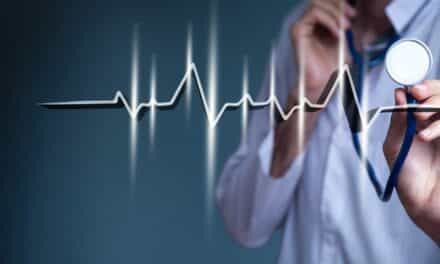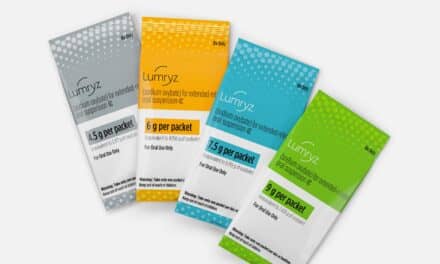Guidelines and recommendations for the management of narcolepsy and other central hypersomnias.By Regina Patrick, RPSGT |
A hypersomnia disorder is a sleep disorder that involves excessive daytime sleepiness or an excessive need for sleep. The excessive sleepiness or need for sleep can be secondary to other factors such as physiological problems (eg, obstructive sleep apnea); poor sleeping habits; and psychological or behavioral factors (eg, depression, drug abuse). Some hypersomnia disorders are not secondary to another factor but instead result from a dysfunction in the central nervous system; they are called central hypersomnias. The most recent International Classification of Sleep Disorders (ICSD-2),1 published by the American Academy of Sleep Medicine (AASM) in 2005, lists four classes of central hypersomnias: narcolepsy, recurrent hypersomnia, idiopathic hypersomnia, and post-traumatic hypersomnia. Of these four, narcolepsy is the most studied, which has led to many advances in understanding this disorder. As a result of these advances, the AASM periodically updates its treatment recommendations for narcolepsy. Previous updates were published in 1994 and 2000; the most recent update was published in 2007. However, the 2007 update, unlike the previous updates, expands treatment recommendations to cover the other classes of central hypersomnias.
Features of narcolepsy, recurrent hypersomnia, idiopathic hypersomnia, and post-traumatic hypersomnia are described below. Some of these disorders are now divided into subtypes.
NARCOLEPSY
Narcolepsy is a disorder characterized by excessive sleepiness or recurrent episodes of uncontrollable but brief periods of sleep. Other symptoms that may occur are cataplexy (the sudden loss of tone in either all or a few skeletal muscles); sleep paralysis (a temporary inability to move muscles during the transition between wake and sleep); and hypnagogic hallucinations (vivid imagery with the onset of sleep that is hard to distinguish from reality). Not all narcoleptics have all four symptoms. Cataplexy, sleep paralysis, and hypnagogic hallucinations are thought to be the result of rapid eye movement (REM) sleep phenomena manifesting during wake.
The ICSD-2 now divides narcolepsy into four subtypes: 1) narcolepsy with cataplexy; 2) narcolepsy without cataplexy; 3) narcolepsy due to a medical condition; and 4) narcolepsy, unspecified. The subtypes differ from each other in the following ways.
Narcolepsy with Cataplexy and Narcolepsy Without Cataplexy
Discrete differences in features of narcolepsy with cataplexy and without cataplexy lead some scientists to believe that these are two distinct disorders. For example, studies indicate that 85% to possibly as high as 95% of narcoleptics who have cataplexy have the gene HLA-DQB1*0602, but only 40% of narcoleptics without cataplexy have the gene2,3; narcoleptics with cataplexy have very low levels of hypocretin in the cerebral spinal fluid, but narcoleptics without cataplexy have normal levels of hypocretin. The exact biochemical processes that allow the HLA-DQB1*0602 gene or hypocretin to play a role in cataplexy are not yet clear.
Narcolepsy Due To Medical Condition
Narcolepsy can occur in people with a medical condition that affects the brainstem. Some medical conditions that may result in narcolepsy are myotonic dystrophy, multiple sclerosis, and Parkinson’s disease. Myotonic dystrophy is a degenerative genetic disorder in which the muscles become progressively contracted. Some research4 in myotonic dystrophy has found neurofibrillary tangles and other neurological damage present in the limbic system, the thalamus, and other brainstem structures involved in sleep. Multiple sclerosis is a degenerative neurological disorder in which discrete areas in the white matter of the central nervous system inexplicably lose myelin, a substance that aids in the transmission of signals in nerve cells. The loss of myelin impairs signal transmission. Sleep is impaired when myelin loss extends into brainstem areas that control sleep. Parkinson’s disease is a degenerative neurological disorder that involves the progressive destruction of the basal nuclei in the brain. Sleep becomes disrupted as the degenerative changes progress since the basal nuclei are involved in various aspects of sleep.
Narcolepsy, unspecified
Narcolepsy, unspecified, is a temporary diagnosis that is used until a more specific diagnosis of a narcolepsy subtype can be determined. Specific diagnosis of a person’s narcolepsy subtype is important since the treatment goals differ for each subtype.
RECURRENT HYPERSOMNIA
Recurrent hypersomnia is characterized by episodic periods lasting days or weeks during which a person is extremely sleepy or may sleep for an extremely long time (eg, 16–20 hours) awakening only to eat and void. Despite the excessively long sleep time, the person does not feel refreshed on awakening. When the episode spontaneously resolves, they sleep normally and are alert. Another episode of hypersomnia may not occur until days, weeks, or months later. The best-known forms of recurrent hypersomnia are Kleine-Levin syndrome and menstrual-related hypersomnia.
Kleine-Levin Syndrome
In Kleine-Levin syndrome, a person sleeps for an extremely long period of time (up to 20 hours in some cases), yet on awakening the person may appear lethargic, be irritable, have an apathetic mood, appear confused, or experience hallucinations. In addition to these symptoms, some people with Kleine-Levin syndrome have uncontrollable binge eating and/or hypersexual behavior (eg, inappropriate sexual advances) during the episode. An episode may last from a few days to a few weeks. When the episode is over, the person’s behavior, sleeping habits, and alertness return to normal. The onset of Kleine-Levin syndrome is usually during early adolescence, but it can occur later. It affects primarily males but it can occur in females. Most people outgrow the disorder by adulthood. Scientists are not sure what causes Kleine-Levin syndrome but note that many people describe having a flu-like illness before the onset of symptoms.5
Menstrual-related Hypersomnia
In menstrual-related hypersomnia, excessive sleepiness occurs during the premenstrual portion of a woman’s menstrual cycle (ie, within 2 weeks before the onset of a woman’s period). With the onset of her period, the hypersomnia quickly ends. Scientists suspect that menstrual-related hypersomnia may be the result of hormonal imbalances. In a 1993 case report, Bamford6 noted excessive sleepiness was associated with high levels of prolactin in a woman with menstrual-related hypersomnia, and in a 1982 case report, Sachs and associates7 noted that inhibiting ovulation through the use of birth control pills stopped episodes of menstrual-related hypersomnia in a 16-year-old teen.
IDIOPATHIC HYPERSOMNIA
Idiopathic hypersomnia is characterized by excessive daytime sleepiness that persists 3 months or longer and is not relieved by naps. It also may be characterized by a prolonged nocturnal sleep period from which a person awakens unrefreshed. No apparent cause such as metabolic disorders, infection, etc can be found for the hypersomnia. Hence, the hypersomnia is idiopathic. In some people, idiopathic hypersomnia is accompanied by headaches; fainting; orthostatic hypotension (ie, a sudden drop in blood pressure on standing); or peripheral vascular complaints such as the sudden constriction of blood vessels resulting in low blood flow to the hands and feet. These accompanying symptoms suggest that autonomic nervous system dysfunction may be involved in idiopathic hypersomnia.
Idiopathic hypersomnia is currently divided into two subtypes: idiopathic hypersomnia with long sleep time and idiopathic hypersomnia without long sleep time. Idiopathic hypersomnia without long sleep time differs from the former subtype in two ways. One, the person sleeps a normal amount of time during the night (typically between 6 and 10 hours) whereas the person with idiopathic hypersomnia with long sleep time sleeps for a period greater than 10 hours (typically 10–14 hours) during the night. Two, the person does not struggle to awaken whereas a person with idiopathic hypersomnia with long sleep time may awaken disoriented (ie, sleep drunkenness). Scientists are not sure why these differences exist. Currently, no specific genetic indicator (eg, an HLA gene) has been found in either form of idiopathic hypersomnia. However, idiopathic hypersomnia with long sleep time may have a genetic component—a 2003 study by Trakada et al8 found that nearly 70% of subjects with this subtype had relatives who also had symptoms of this form of idiopathic hypersomnia.
POST-TRAUMATIC HYPERSOMNIA
Post-traumatic hypersomnia is excessive sleepiness that results from a traumatic event involving the central nervous system. Examples of trauma that can result in this disorder are stroke; brain injury resulting from a penetrating foreign object; brain surgery; and radiation treatment targeting brain structures. The post-traumatic hypersomnia is characterized by frequent daytime sleepiness, which a person may or may not be able to resist. The duration of the person’s nocturnal sleep period may be prolonged compared with pretrauma sleep length. Post-traumatic hypersomnia is most pronounced immediately after the trauma and often resolves after several weeks or months. However, some people have residual sleepiness and other sleep complaints, which may worsen gradually during the 6 to 18 months following the trauma. The likelihood of suffering disabling post-traumatic hypersomnia increases with increasing severity of the initial head trauma.
UPDATED TREATMENT RECOMMENDATIONS
In 2007, the AASM published its updated recommendations for the treatment of narcolepsy and other central hypersomnias.9 A recommendation is listed as either a standard treatment, a guideline treatment, or a treatment option. A standard treatment is a generally accepted patient care strategy (ie, a first-line therapy); a guideline treatment has a moderate degree of success in treating a disorder; and a treatment option means that the treatment is of uncertain clinical use.
Narcolepsy Treatment Recommendations
In general, the goal of drug treatment for narcolepsy is to maintain wakefulness and/or reduce episodes of cataplexy. To this end, various stimulant drugs are used to maintain wakefulness, and antidepressants and other drugs are used to combat cataplexy, hypnagogic hallucinations, and sleep paralysis. More specifically, the AASM recommends the following for treating narcolepsy.
- Modafinil is recommended as a standard treatment to maintain wakefulness. Amphetamine and its derivatives, dextroamphetamine, methamphetamine, and methylphenidate, are recommended as guideline treatments to maintain wakefulness.
- Two new drugs recently added to treat narcolepsy are: 1) sodium oxybate, a form of gamma-hydroxybutyrate (GHB), which is recommended as a standard treatment to control cataplexy and daytime sleepiness, as a treatment option to control hypnagogic hallucination and sleep paralysis; and 2) ritanserin (a serotonin antagonist), which is recommended as a treatment option to control daytime sleepiness. Ritanserin, however, is not available in the United States.
- In 2000, tricyclic antidepressants and fluoxetine (a selective serotonin reuptake inhibitor [SSRI]) were recommended as guideline treatments for cataplexy, sleep paralysis, and hypnagogic hallucinations. This has now been revised. Tricyclic antidepressants and several other antidepressants are now recommended as guideline treatments for cataplexy only. The newly added antidepressants are the SSRI drug class, venlafaxine (a serotonin-norepinephrine reuptake inhibitor [SNRI]), and reboxetine (a norepinephrine reuptake inhibitor [NRI]). Reboxetine, however, is not available in the United States.
- Tricyclic antidepressants, SSRIs, and venlafaxine are recommended as treatment options for sleep paralysis and hypnagogic hallucinations. Note that this recommendation downgrades tricyclic antidepressants from the 2000 recommendation as a guideline treatment for these symptoms.
- In 2000, the stimulant drug pemoline (brand name, Cylert) was recommended as a treatment for daytime sleepiness. Since that time, pemoline has been dropped from the drug market in the United States due to problems with liver toxicity. This drug therefore is no longer recommended to treat narcolepsy.
- In 2000, the drug selegine, a monoamine oxidase inhibitor (MAOI), was thought to be moderately successful in treating all narcoleptic symptoms. However, the drug is very expensive (nearly $500 per month in 2000); the therapeutic dose is high and risks drug-induced hypertension; and a patient needs to stringently avoid foods containing tyramine (a substance found in cheese and other foods) to prevent diet-induced hypertension. As a result of these drawbacks, the AASM has now downgraded selegine from a guideline treatment to a treatment option.
- A nondrug therapy recommended as a guideline treatment for narcolepsy is scheduled naps to combat sleepiness. The AASM points out, however, that scheduled naps are rarely effective as a primary therapy for narcolepsy.
Idiopathic Hypersomnia Treatment Recommendations
Modafinil is newly recommended as a treatment option that may be effective in combating daytime sleepiness in idiopathic hypersomnia. This recommendation is for both forms of idiopathic hypersomnia (ie, with and without long sleep time). Amphetamine and its derivatives are also newly recommended as treatment options for both forms of idiopathic hypersomnia.
Hypersomnia Due To Medical Condition Treatment Recommendations
Stimulant drugs may be used to maintain wakefulness in medical conditions that result in narcolepsy. Some drugs may be more effective for certain conditions. For example, modafinil and methylphenidate are recommended as treatment options to combat daytime sleepiness due to myotonic dystrophy; modafinil is a guideline treatment to combat daytime sleepiness due to multiple sclerosis; and modafinil is recommended as a treatment option to combat daytime sleepiness due to Parkinson’s disease. These recommendations are new.
Recurrent Hypersomnia Treatment Recommendations
Amphetamine, amphetamine-derivatives, and modafinil are treatment options that may be used to increase wakefulness in recurrent hypersomnia disorders. This is a new recommendation.
The mood-stabilizing drug lithium carbonate has shown some success in treating Kleine-Levin syndrome. A 2003 German study10 treated five subjects with lithium during the hypersomnia phase. The researchers noted that the length of the episode was shortened and associated behaviors such as excessive eating did not occur. Based on this study, the AASM recommends lithium carbonate as a treatment option for Kleine-Levin syndrome. This is a new recommendation.
Miscellaneous Treatment Recommendations
The following treatment recommendations were initially applied only to narcolepsy. They are now broadened to include other central hypersomnias.
The combined use of long- and short-acting stimulants (eg, modafinil and methylphenidate, respectively) is a treatment option that may be more effective in maintaining wakefulness than using either alone. The combined use allows a person to achieve alertness quickly, then maintain it for a longer period of time.
Modafinil may be useful in maintaining wakefulness in children who are 6 to 15 years of age. This treatment option recommendation is based on the results of a 2003 study by Ivanenko and associates11 who found the drug to be safe and well tolerated in children with narcolepsy or idiopathic hypersomnia.
For all central hypersomnias, the AASM recommends follow-up care as a necessary standard to monitor a patient’s adherence and response to treatment; respond to side effects of medications; and enhance a patient’s adaptation to the central hypersomnia.
The AASM recommends that patients should be advised to avoid dangerous activities until sleepiness is controlled. If a patient does not respond well to stimulant treatment, they should be assessed for other sleep disorders that may be contributing to excessive sleepiness. Polysomnographic re-evaluation should be considered if sleepiness increases significantly or if the patient develops symptoms indicating that another sleep disturbance such as obstructive sleep apnea may be a factor in the patient’s hypersomnia.
Scientists continue to work to understand why central hypersomnias occur, but many areas for research still remain uninvestigated. The AASM encourages more research in the following areas:
- Drug efficacy studies are needed that: 1) compare the effectiveness and safety of the newer drugs (eg, modafinil, sodium oxybate) with those of older drugs (eg, amphetamine) in combating sleepiness in narcolepsy; and 2) compare the efficacy of antidepressants versus sodium oxybate in controlling cataplexy;
- More studies are needed that focus on determining how to prevent narcolepsy rather than focusing on combating its symptoms;
- More studies are needed that investigate other therapies (eg, immunoglobulin therapy)12-14 that may be effective in treating the disorder;
- More studies are needed that focus on other types of central hypersomnias—especially in determining the efficacy of various stimulants to combat sleepiness in these disorders;
- More studies are needed to determine the efficacy and safety of drug therapy in certain populations such as children, the elderly, and pregnant or nursing women suffering from central hypersomnias.
More clearly understanding these and other factors in central hypersomnias will help in providing better care to people affected by these disorders.
Regina Patrick, RPSGT, is a contributing writer for Sleep Review.
REFERENCES
-
- American Academy of Sleep Medicine (AASM). The International Classification of Sleep Disorders: Diagnostic and Coding Manual. 2nd ed. Westchester, Ill: AASM; 2005.
- Choo KL, Guilleminault C. Narcolepsy and idiopathic hypersomnolence. Clin Chest Med. 1998;(1):169–181.
- Zeman A, Britton T, Douglas N, et al. Narcolepsy and excessive daytime sleepiness. BMJ. 2004;329(7468):724–728.
- Oyamada R, Hayashi M, Katoh Y, et al. Neurofibrillary tangles and deposition of oxidative products in the brain in cases of myotonic dystrophy. Neuropathology. 2006;26(2):107–114.
- Stanford School of Medicine. Center for Narcolepsy. Kleine-Levin syndrome. 2008. Available at: med.stanford.edu/school/Psychiatry/narcolepsy/KLS.html. Accessed March 31, 2008.
- Bamford CR. Menstrual-associated sleep disorder: an unusual hypersomniac variant associated with both menstruation and amenorrhea with a possible link to prolactin and metoclopramide. Sleep. 1993;16:484–486.
- Sachs C, Persson HE, Hagenfeldt K. Menstruation-related periodic hypersomnia: a case study with successful treatment.
Neurology. 1982;32:1376–1379.
- Billiard M. Diagnosis of narcolepsy and idiopathic hypersomnia: an update based on the International Classification of Sleep Disorders, 2nd edition. Sleep Med Rev. 2007;11:377–388.
- Morgenthaler TI, Kapur VK, Brown TM, et al. Practice parameters for the treatment of narcolepsy and other hypersomnias of central origin. Sleep. 2007;30:1705–1711.
- Poppe M, Friebel D, Rkeuner U, et al. The Kleine-Levin syndrome–effects of treatment with lithium. Neuropediatrics. 2003;34(3):113–119.
- Ivanenko A, Tauman R, Gozal D. Modafinil in the treatment of excessive daytime sleepiness in children. Sleep Med. 2003;4:579–582.
- Lecendreux M, Maret S, Bassetti C, et al. Clinical efficacy of high-dose intravenous immunoglobulins near the onset of narcolepsy in a 10 year old boy. J Sleep Res. 2003;12:347–348.
- Dauvilliers Y, Carlander B, Rivier F, et al. Successful management of cataplexy with intravenous immunoglobulins at narcolepsy onset. Ann Neurol. 2004;56:905–908.
- Harder B. Narcolepsy science reawakens: insights create a new order for disordered sleep. Science News (online). June 19, 2004;165(25):394. Available at: www.phschool.com/science/science_news/articles/narcolepsy_science.html. Accessed April 25, 2008.





